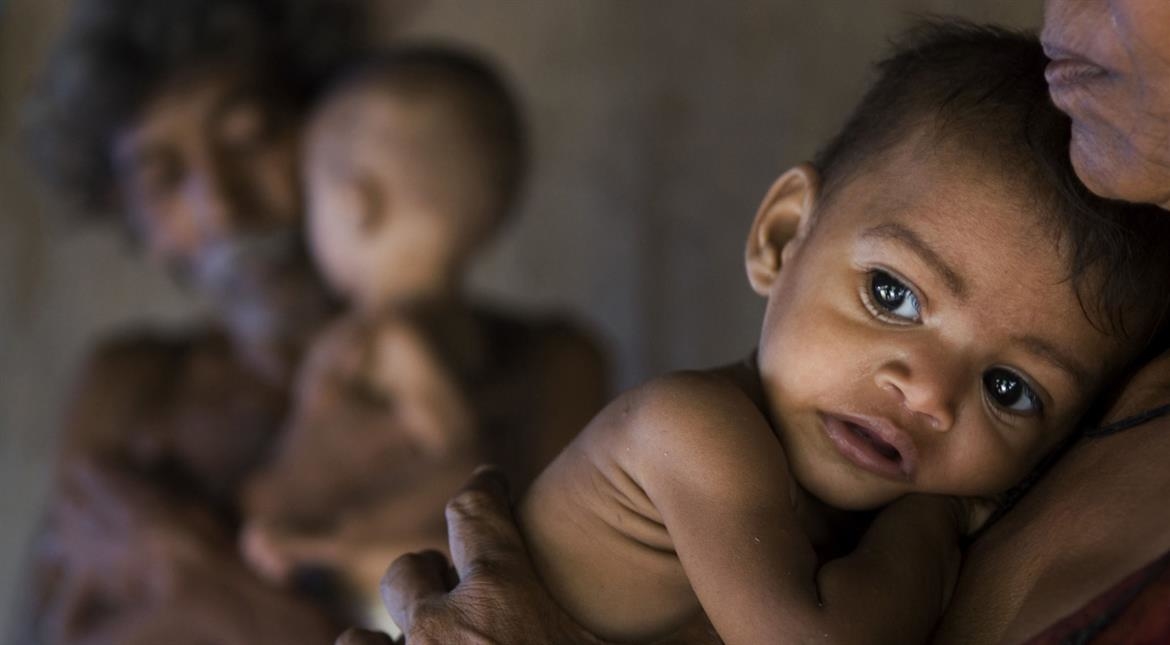Unless, the present corporate growth model is reversed, any hope for a better future for the children will remain a hope.

The recent National Family Health Survey (NFHS – 4) [2015-16], has put out some worrying data on the nutritional status of children in India.
A child’s brain develops rapidly during the first two years of their life. The NFHS data, which was published with five different indicators of childhood nutrition, showed that less than 10% of the children, under two years of age, in India received adequate nutrition. The rest 90% were severely malnourished and ran a high risk of permanent cognitive problems.
And this is just one of the problems the NFHS data revealed. The results showed that 34% of the children below the age of five were underweight, 21% of them suffered from weight too low compared to their height, a condition also known as wasting. 38% children were stunted, which meant that their height was far below the required height for their age.
According to UNICEF, “Stunting is associated with an under-developed brain, with long-lasting harmful consequences, including diminished mental ability and learning capacity, poor school performance in childhood, reduced earnings and increased risks of nutrition related chronic diseases, such as diabetes, hypertension, and obesity in future”. Anemia too is widely prevalent among children in India. The data showed that more than 58% of the children under 5 years age are anemic.
One may think that the problem of malnutrition is mostly prevalent in states with low economic growth and resources. But the NFHS data proves to one and all, how wrong that assumption is.
Gujarat, a state which is projected as a model state by the BJP has the lowest percentage of children who have received adequate nutrition. Only 5.2% of children under two years have received sufficient nutrition and 40% of the children under the age 5, are underweight in Prime Minister Modi’s model state.
The only other states doing worse than Gujarat, are the long term BJP-led state Madhya Pradesh, (43%), Bihar (44%) and Jharkhand (48%). The states of Orissa and West Bengal, which are not exactly the poster-boy states for for economic growth, also have less percentage of underweight children (34% and 31% respectively).
The economic growth created through corporate appeasement, in states like Gujarat, has also not benefitted the 30% of India’s population, that is still living on less than $1.9 (which comes down to around Rs. 120 a day). And it is definitely not working for the children of these poor families, who suffer from malnourishment.
All available evidence indicate, that this growth model is pushing more and more families to the brink. Under the BJP rule, India is expected to follow in the footsteps of Gujarat. In the last two years, the share of the top 1% in country’s wealth increased from 49% to 58.4% – while the share of bottom 30% became ZERO.
What is happening to the children of the bottom 30% – is obvious from the data. Unless the present corporate growth model is reversed, any hope for a better future for the children will remain bleak.
Courtesy: Newsclick.in